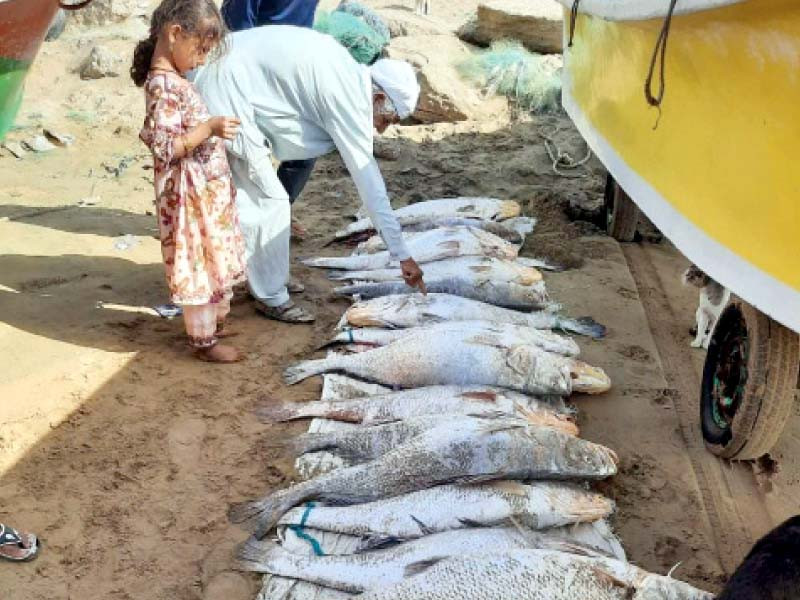
A fishing boat operating in the waters off Jiwani caught 18 large croakers (called Kir in Balochi) and docked at Gunz in Balochistan with its prized catch.
The largest specimen of the catch fetched Rs500,000, whereas the smaller ones are expected to sell for around Rs100,000.
Sajad Umer, the captain of the boat, was jubilant at the catch, which was made through bottom-set gillnets and fetched a total of about Rs800,000 during the one-day expedition.
Spotted croakers and Japanese meagre are two species of large croakers found in Pakistan and have garnered prices up to millions of rupees in the recent past.
The primary reason for such a high price of the fish is its large swim bladder - which these fish have for buoyancy and communication – which is used in making soups thought to ease pregnancy-related discomfort and cure joint pains, among other ailments.
A single swim bladder can fetch as much as Rs0.5 million per kilogramme in the markets of Hong Kong or Guangzhou.
In Pakistan, the large croaker has been harvested for decades due to the high quality of its meat. The export of its swim bladder from Pakistan began about 170 years ago when dried fish maws used to be exported to Europe for clarification of wine and beer.
However, due to the high prices offered in the Chinese market and the availability of alternates for clarification, dried fish maws are usually sold in Chinese markets.
According to World Wildlife Fund-Pakistan (WWF-Pakistan) Technical Advisor Muhammad Moazzam Khan, large croakers are local migrants and form large spawning aggregations locally known as “Aáranga” in Balochistan and “Pinn” in Sindh.
He said that these aggregations were frequently observed in the coastal waters off Jiwani, Gwadar, Ormara, and the Sonmiani Bay, however, recently such groupings have been rarely observed in Pakistani waters.
Increased demand for fish maws in Chinese markets has depleted stocks of the large croaker globally and some species, such as yellow croakers in China and totoaba from Baja California, are endangered.
Khan warned that spotted croaker (Protonibea diacanthus) and Japanese meagre (Argyrosomus japonicas) are endangered and unless adequate management measures are taken, large croakers may become locally extinct.
Sudheer Ahmed, Research Associate at WWF-Pakistan’s Information Centre at Jiwani, stated that the occurrence of spawning aggregations is frequently reported from the Daran-Jiwani area over the last four years. Fishermen caught several large croakers from the area in 2019 and 2020.
He also feared that uncontrolled fishing of croakers in the area may lead to their local extinction and emphasised the need to take immediate measures to protect the species, which could be accomplished by declaring the region as a Marine Protected Area.
Published in The Express Tribune, May 18th, 2022.





1734696044-0/ceo-(1)1734696044-0-165x106.webp)






1734511806-0/Untitled-design-(5)1734511806-0-270x192.webp)
1734587529-0/Express-Tribune-(1)1734587529-0-270x192.webp)


1734468458-0/Copy-of-Untitled-(50)1734468458-0-270x192.webp)







COMMENTS
Comments are moderated and generally will be posted if they are on-topic and not abusive.
For more information, please see our Comments FAQ